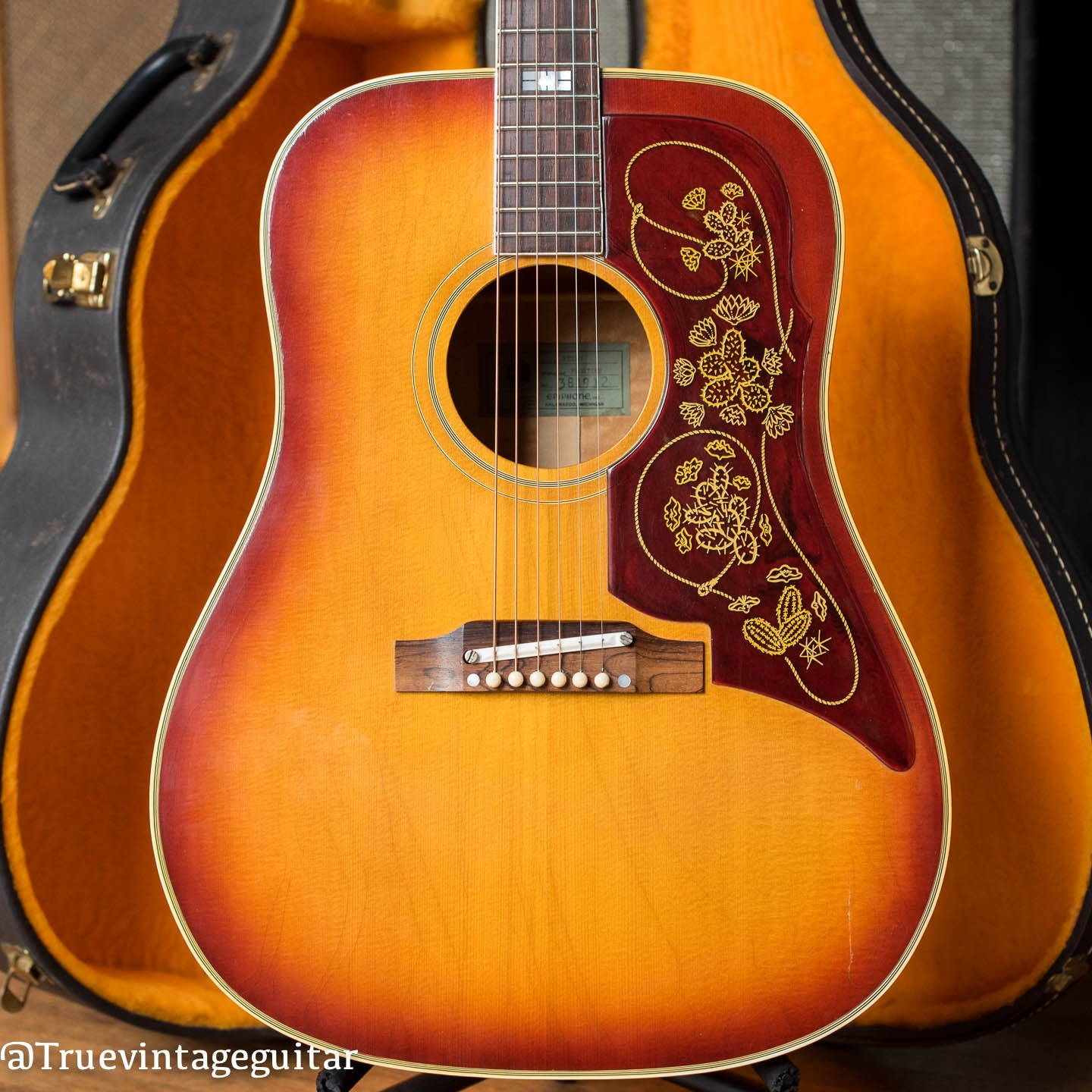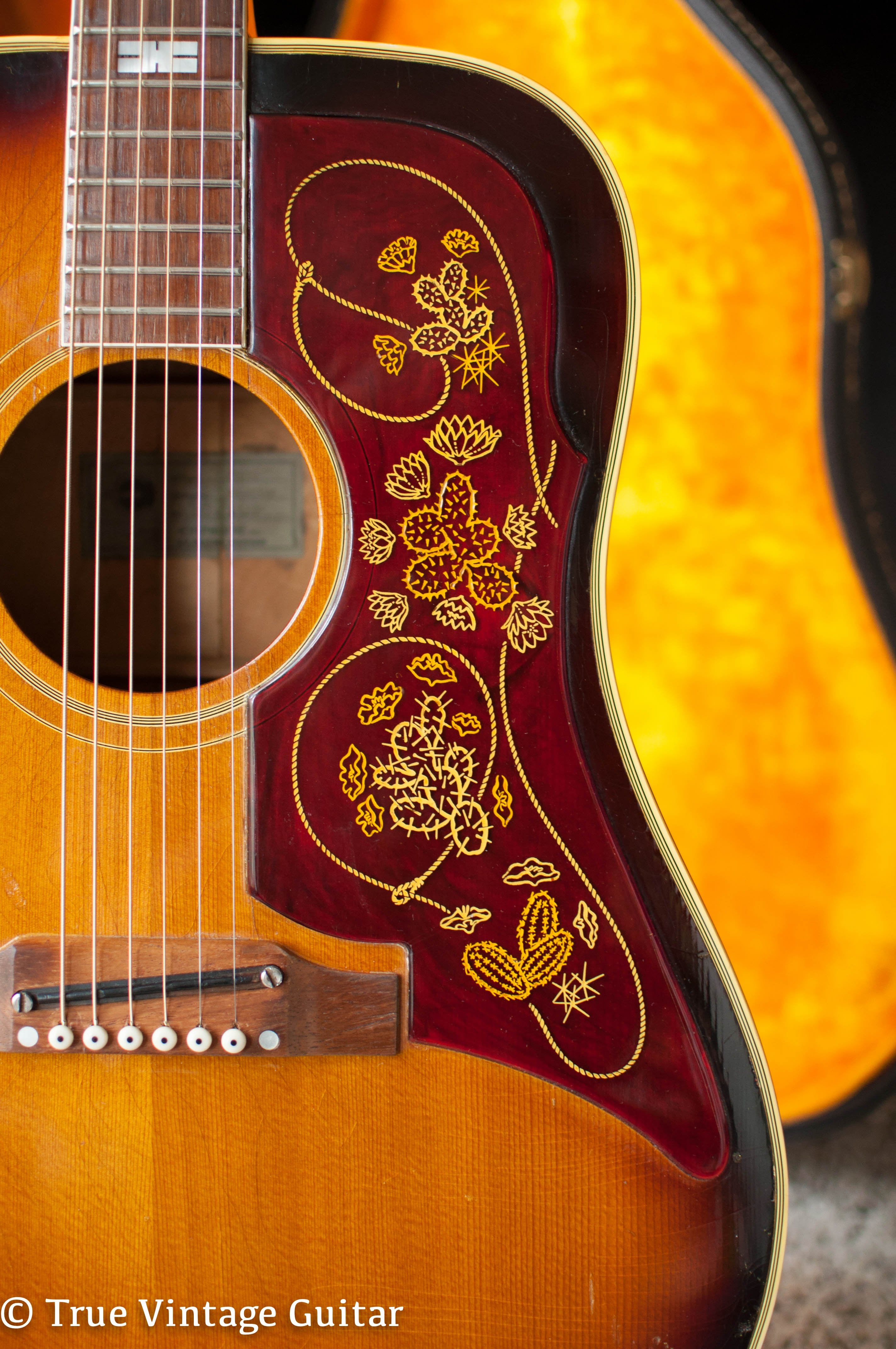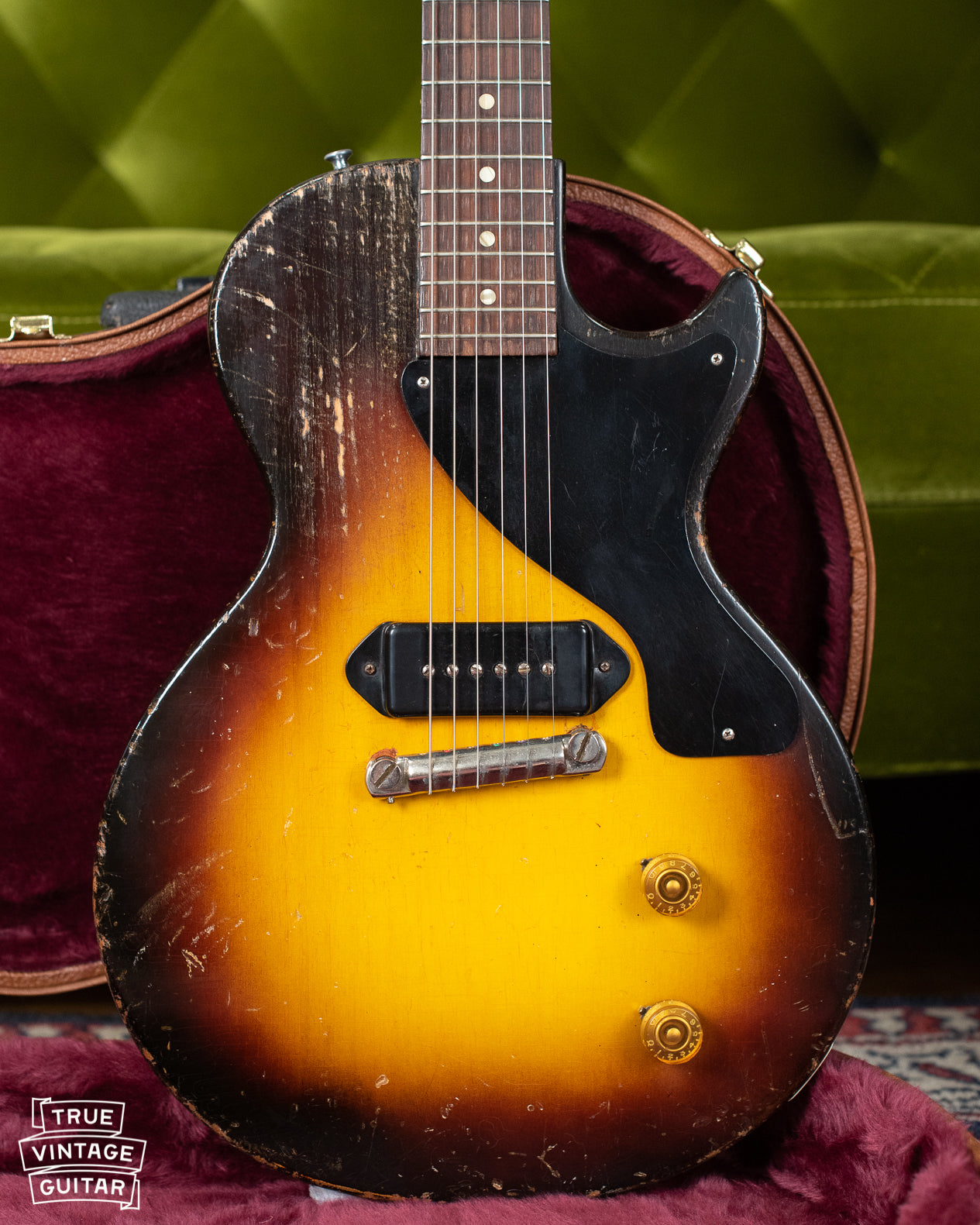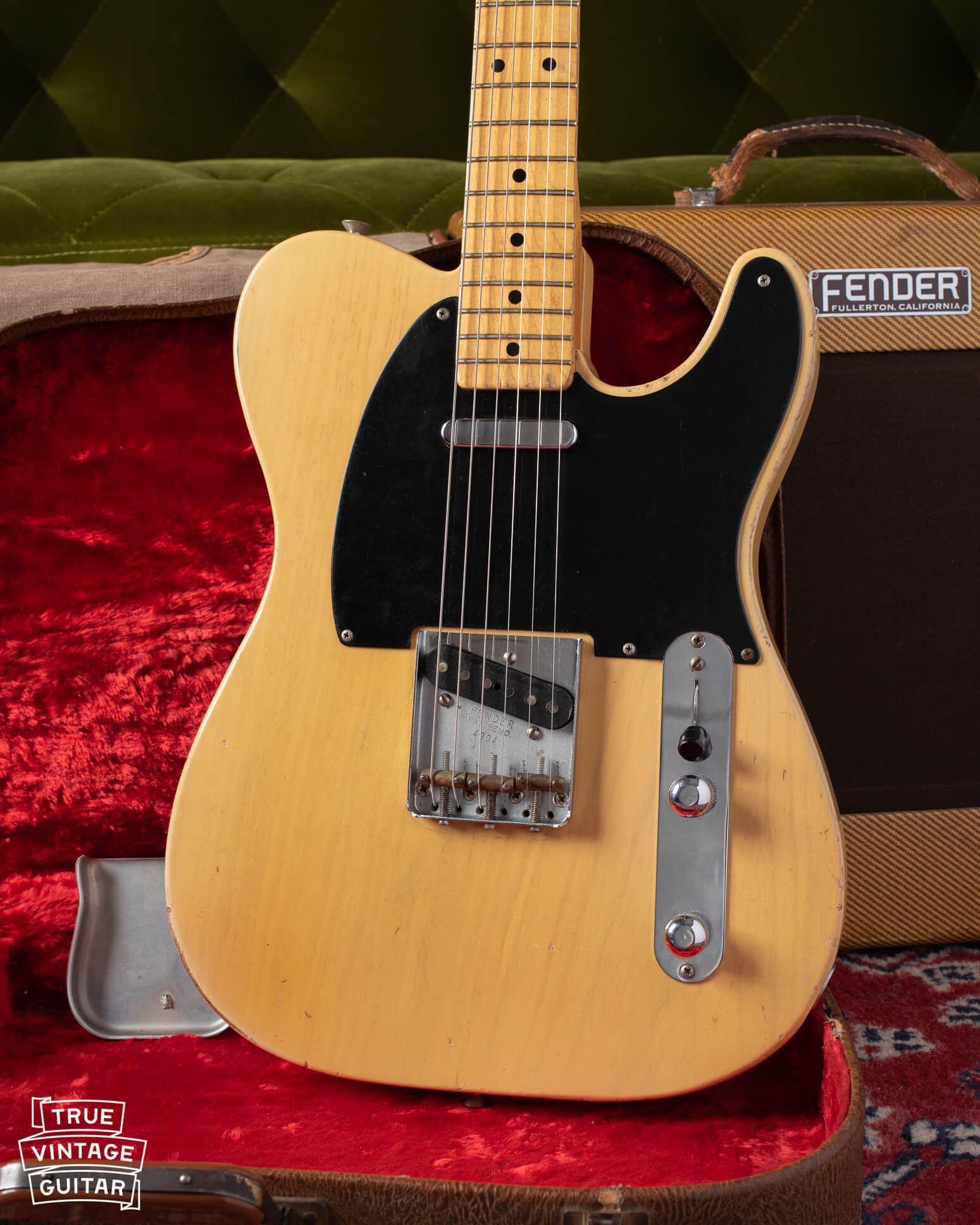The two decades from 1950 to 1970 saw a massive shift for the Epiphone brand name from family company, to Gibson's upscale line, and finally to inexpensive import sub-brand. Many players are unfamiliar with the fact that the Gibson made, Epiphone branded guitars from 1957 until 1969 were partially an attempt by Gibson to get their guitars into a larger audience of shops in the US and abroad. These guitars were made on the exact same line by the same employees as their Gibson brand counterparts and were usually more expensive.
I'm always a vintage guitar buyer, but I'm especially looking for the Gibson made Epiphone guitars made from the late 1950s up until 1969. You can contact me here to sell a vintage Epiphone guitar.
The flat top line in the 1960s seems to be most popular today for their unique aesthetic and classic Gibson flat-top tone. Here are two popular models and one you may have never heard of.
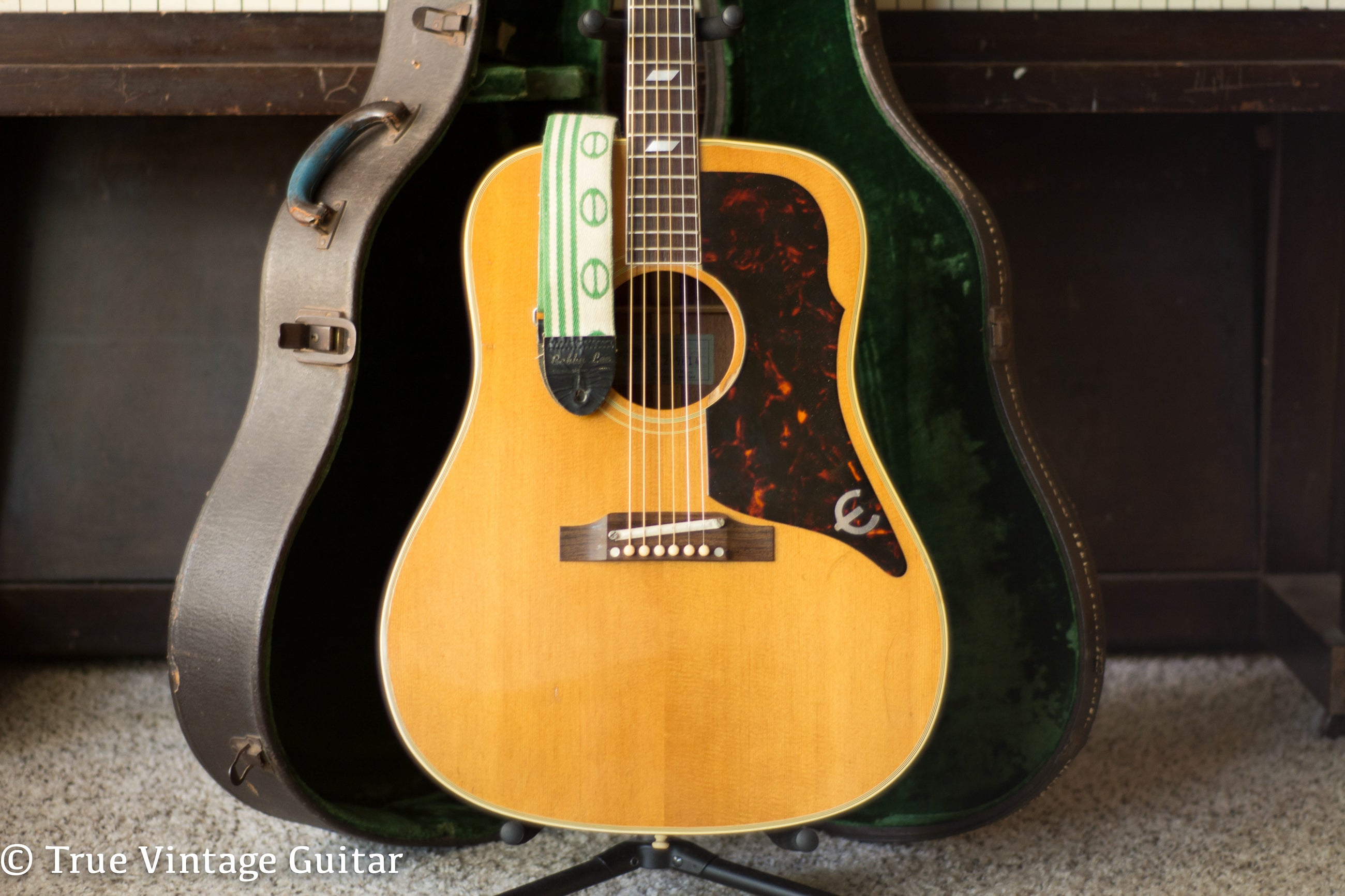
FT-79 Texan
By far the most popular of the line was Epiphone's J-45 equivalent: the FT-79 Texan. Prior to 1957, the FT-79 employed an odd body shape and wasn't commercially successful. Gibson ditched the Epiphone body design in favor of their popular round shoulder Jumbo body and added the more attractive name "Texan" to the model. The earliest Texans (1957 to about 1961) were constructed using necks salvaged from the remnants of the Epiphone factory in NY. This may have been the inspiration for Gibson to continue making the Texan with a 25 1/2" scale neck instead of their standard 24 3/4" scale length. The Texan was the guitar of choice for Paul McCartney for recording popular songs like "Yesterday."
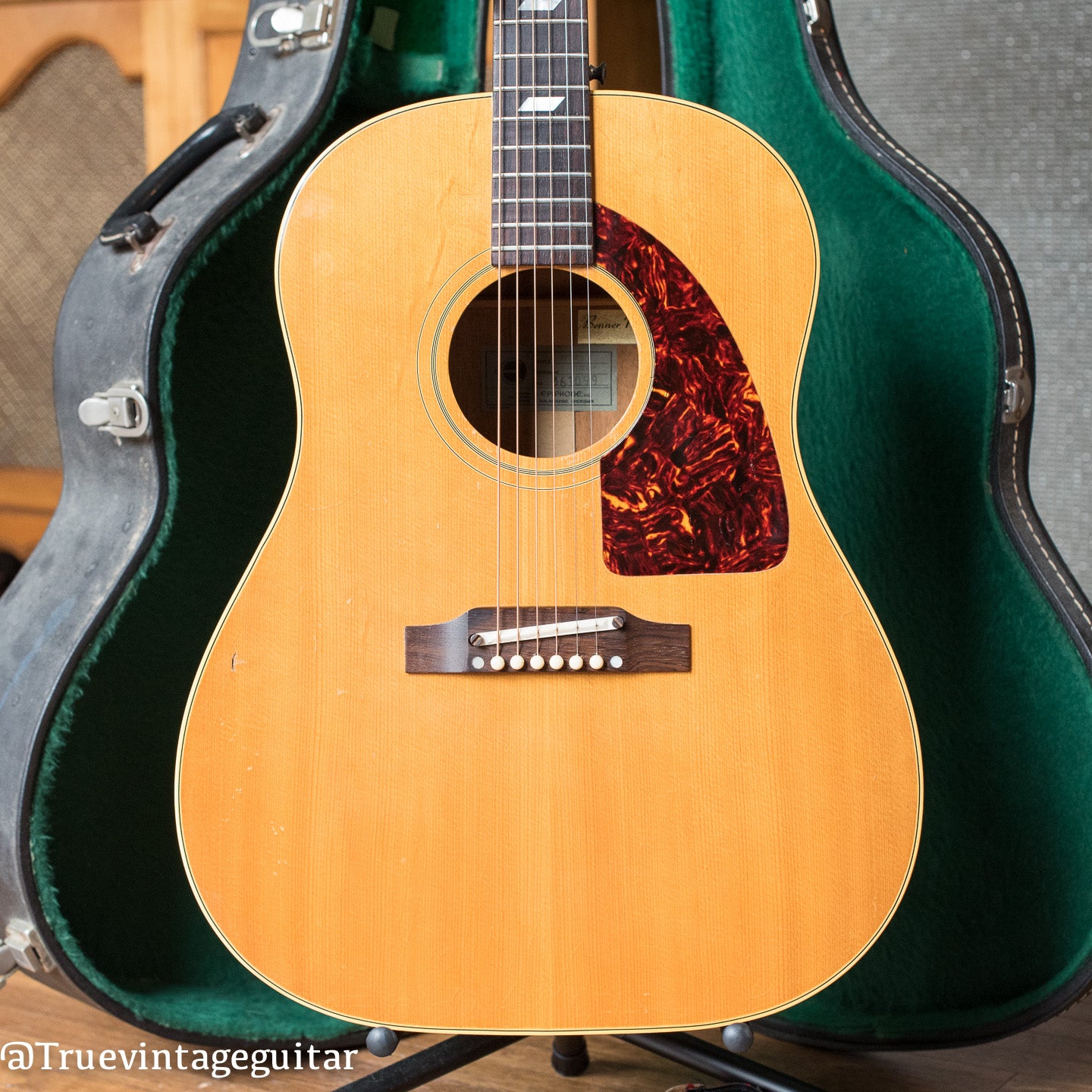
FT-110 Frontier
Slightly more obscure than the Texan is the FT-110 Frontier. The Frontier was the first Gibson made acoustic guitar to feature the new square shoulder design starting in 1958. The 1963 to 1967 Frontiers are easily spotted by their attractive cacti and lariat adorned large pickguard. The Frontier's long scale neck and Maple back and sides construction were features that Gibson reused for a new fancy model in 1962: the Dove. Many players consider the Frontier to be just a rebranded Dove when it actually predated the Dove by about four years. The Frontier's tone can be described as a low to mid range rumble that shines for rhythm strumming.
